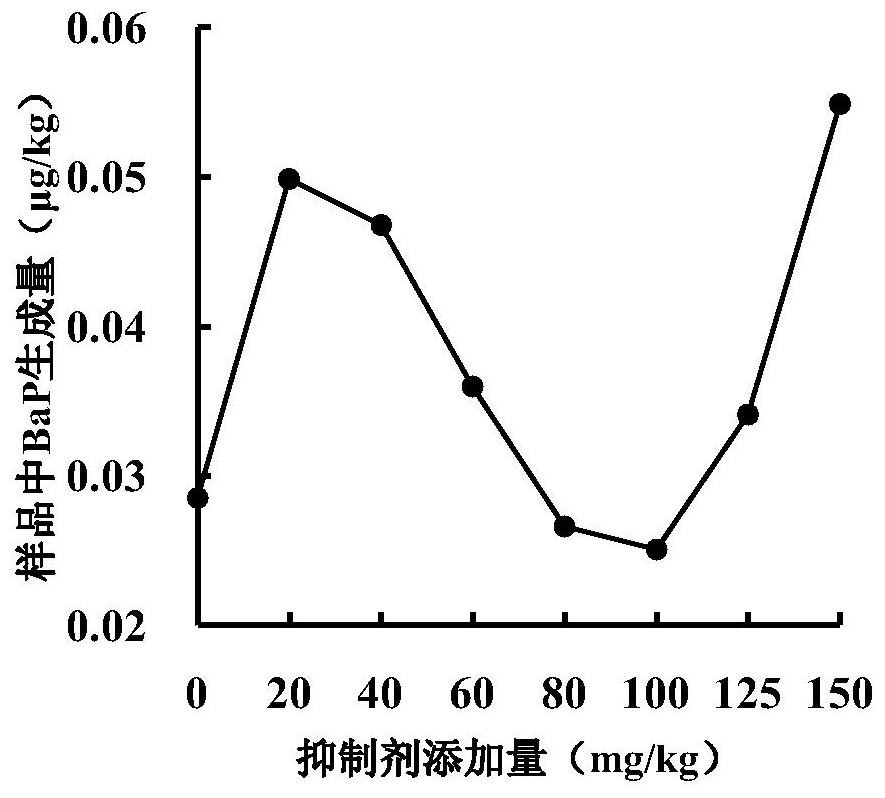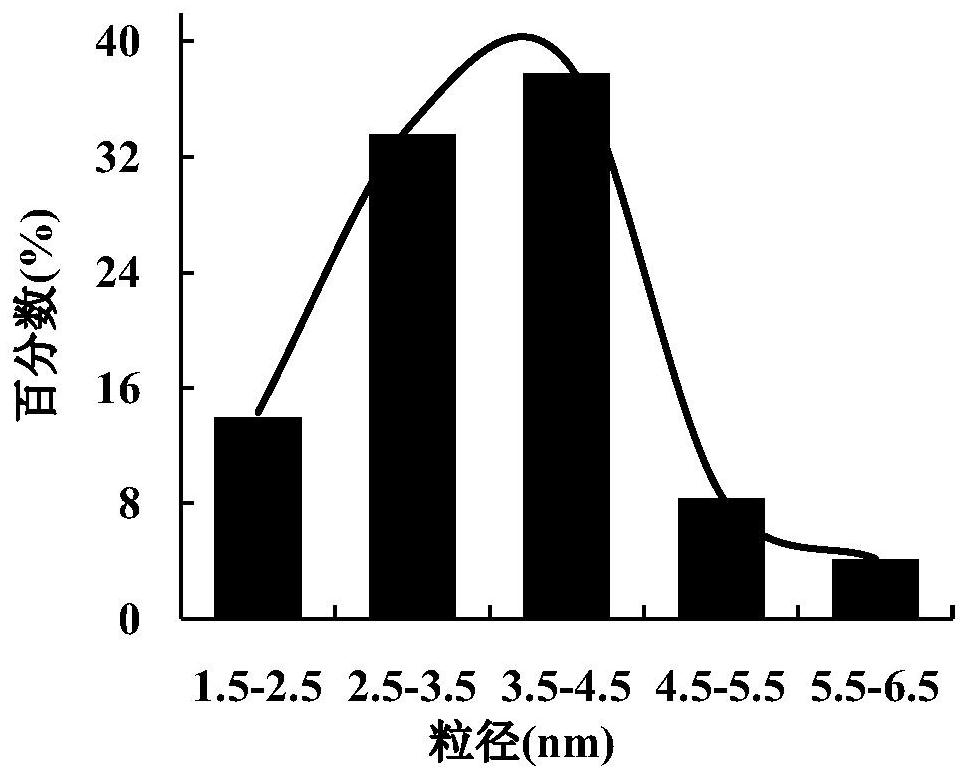Carbon Nanoparticle Inhibitors and Their Applications
A technology of carbon nano-particles and inhibitors, which is applied in the direction of application, preservation of meat/fish with chemicals, food ingredients as antioxidants, etc., to achieve good inhibitory effect
- Summary
- Abstract
- Description
- Claims
- Application Information
AI Technical Summary
Problems solved by technology
Method used
Image
Examples
Embodiment 1
[0028] The carbon nanoparticle suppression of the present embodiment includes the following components and the proportions by weight thereof:
[0029] 0.2 part of tea polyphenols;
[0030] 1.5 parts gellan gum;
[0031] Sodium nitrite 0.03 parts.
[0032] The preparation method of the carbon nanoparticles in this embodiment is to mix 0.2 grams of tea polyphenols, 1.5 grams of gellan gum and 0.03 grams of sodium nitrite respectively and mix well.
[0033] The carbon nanoparticles of this embodiment can be applied to inhibit the harmful substances produced in the process of high-temperature processing of pork. On average, 50 ml of water is added to each kilogram of pork to be processed, and then high temperature processing is carried out.
[0034] The high-temperature processing in this embodiment includes processes such as frying, frying, steaming, and boiling. The harmful substances produced during the high temperature processing of pork in this embodiment include carbon n...
Embodiment 2
[0036] The carbon nanoparticle suppression of the present embodiment includes the following components and the proportions by weight thereof:
[0037] Tea polyphenols 0.1 part;
[0038] 1.25 parts of gellan gum;
[0039] Sodium nitrite 0.015 parts.
[0040] The preparation method of the carbon nanoparticles in this embodiment is to mix 0.1 g of tea polyphenols, 1.25 g of gellan gum and 0.015 g of sodium nitrite respectively and mix well.
[0041] The carbon nanoparticles of this embodiment can be applied to inhibit the harmful substances produced in the process of high-temperature processing of beef. On average, 60 ml of water is added to each kilogram of beef to be processed, followed by high-temperature processing.
[0042] The high-temperature processing in this embodiment includes processes such as frying, frying, steaming, and boiling. In this embodiment, the harmful substances produced during the high temperature processing of beef include carbon nanoparticles and / or...
Embodiment 3
[0044] The carbon nanoparticle suppression of the present embodiment includes the following components and the proportions by weight thereof:
[0045] 0.3 parts of tea polyphenols;
[0046] Gellan gum 1.75 parts;
[0047] Sodium nitrite 0.04 parts.
[0048] The preparation method of the carbon nanoparticles in this embodiment is to mix 0.3 grams of tea polyphenols, 1.75 grams of gellan gum and 0.04 grams of sodium nitrite respectively and mix well.
[0049] The carbon nanoparticles of this embodiment can be applied to inhibit harmful substances produced during high-temperature processing of mutton. The inhibition process is as follows: adding 120 mg of carbon nanoparticle inhibitor to each kilogram of mutton to be processed, adding water and soaking for 50 minutes. On average, 70 ml of water is added to each kilogram of mutton to be processed, and then high temperature processing is carried out.
[0050] The high-temperature processing in this embodiment includes processes ...
PUM
 Login to View More
Login to View More Abstract
Description
Claims
Application Information
 Login to View More
Login to View More - R&D
- Intellectual Property
- Life Sciences
- Materials
- Tech Scout
- Unparalleled Data Quality
- Higher Quality Content
- 60% Fewer Hallucinations
Browse by: Latest US Patents, China's latest patents, Technical Efficacy Thesaurus, Application Domain, Technology Topic, Popular Technical Reports.
© 2025 PatSnap. All rights reserved.Legal|Privacy policy|Modern Slavery Act Transparency Statement|Sitemap|About US| Contact US: help@patsnap.com



